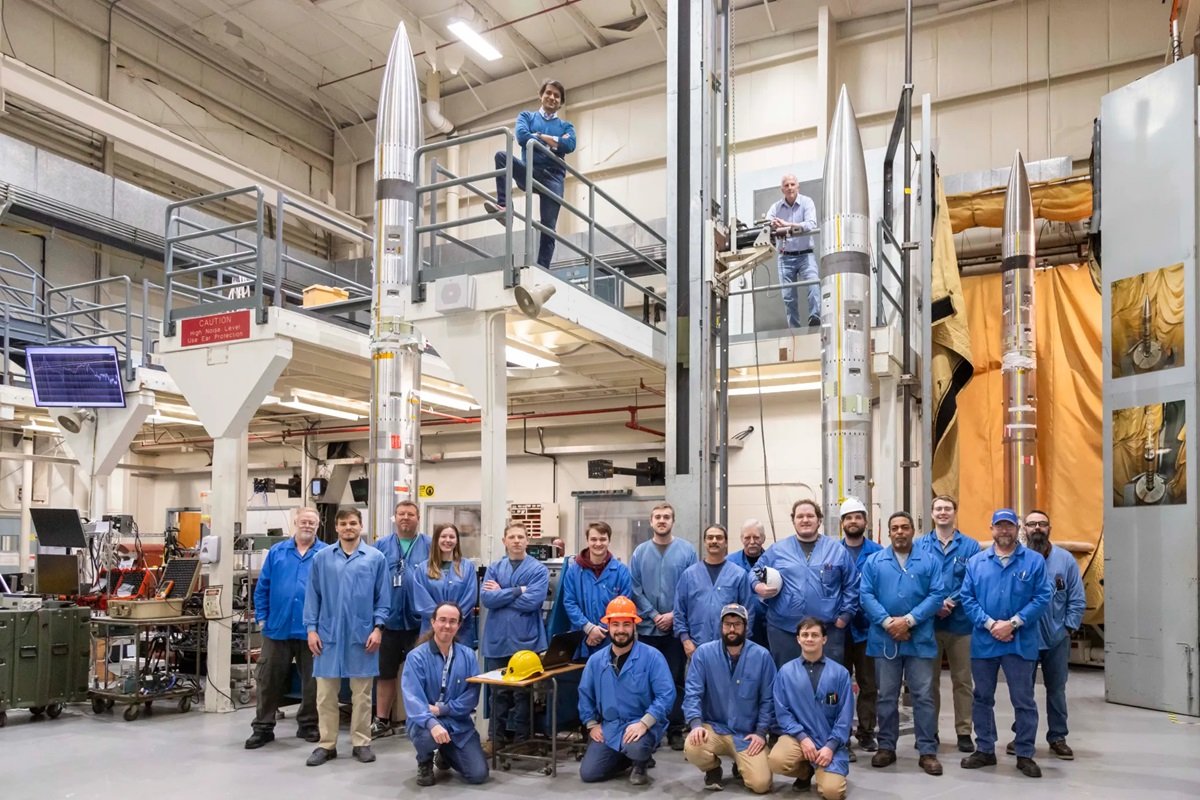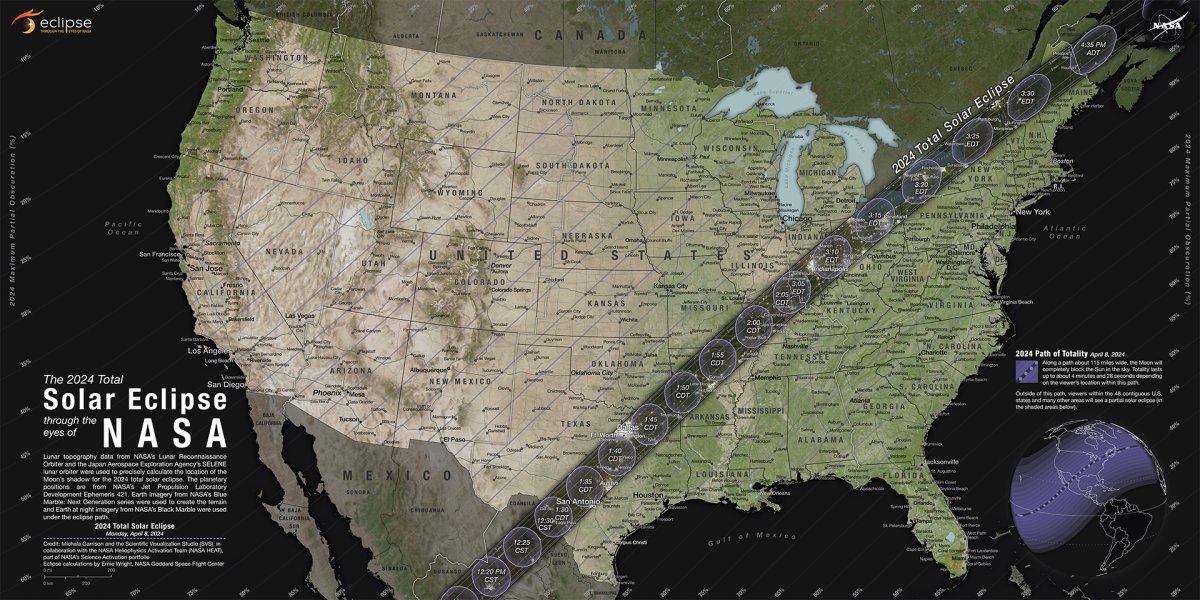When America's eyes turn to the skies for the solar eclipse, keen-eyed viewers in Virginia may catch a glimpse of something else—rockets streaking into the moon's shadow.
NASA is set to launch three of the instrument-laden probes on April 8, with the goal of studying how the temporary blocking of sunlight affects part of the upper atmosphere.
The so-called sounding rockets will each blast off from the space agency's Wallops Flight Facility, one 45 minutes before, one during, and the last 45 minutes after the local peak eclipse.
The trio will soar into the ionosphere, a region 55 to 310 miles above the Earth's surface where, in the day, particles are electrically charged, or "ionized," by radiation from the sun.
"It's an electrified region that reflects and refracts radio signals, and also impacts satellite communications as the signals pass through," explained mission leader and engineering physicist professor Aroh Barjatya, of Florida's Embry-Riddle Aeronautical University, in a statement.
At night, the ionosphere thins out as electrons and ions relax and recombine back into neutral atoms, only to separate again the next day.
A solar eclipse creates, in effect, a temporary, localized night—causing the local temperature and ionospheric density to drop and then rise again.
In this way, the passage of the moon's shadow across the Earth triggers both large-scale atmospheric waves and smaller-scale disturbances that have the potential to interfere with radio communications passing through the ionosphere.
At the same time, the ionosphere can be disrupted by both regular weather and its space-based counterpart.
"Understanding the ionosphere and developing models to help us predict disturbances is crucial to making sure our increasingly communication-dependent world operates smoothly," Barjatya added.
He told Newsweek: "Sounding rockets will help us study if, when, where, and why small-scale perturbations happen due to sudden reduction in solar radiation and/or due to meteorological changes brought on by the eclipse shadow.
"We hope to collect this data and then try to infuse it into modeling and study their generation."
"The beauty about eclipse is that we know exactly what path it will take and thus we can create a very targeted experiment," Barjatya continued.
Other phenomena that disturb the ionosphere, he explained, are not 100 percent predictable.
He added: "Thus, scientists trying to study aurora, plasma bubbles, etc. oftentimes have to wait for weeks to be able to launch rockets into them to get finest scale measurements."


Sounding rockets are an ideal tool to study the effect of the eclipse on the atmosphere, NASA explains, because they can be launched during the event and take readings at all altitudes of the ionosphere.
(Satellites, in contrast, can only sample a single altitude—and may not even be on an orbit that puts them in the right place and time to coincide with the eclipse's totality.)
The trio of sounding rockets are intended to reach an altitude of around 260 miles, and will measure both charged and neutral particle densities within the ionosphere, as well as electrical and magnetic fields.
"Each rocket will eject four secondary instruments the size of a two-liter soda bottle that also measure the same data points, so it's similar to results from 15 rockets while only launching three," said Barjatya.
Data from the rockets will be supplemented with other measurements taken by high-altitude balloon and ground-based radar, and analyzed by a team of researchers from Embry-Riddle and Baltimore's Johns Hopkins University.

This is not the first time that the so-called "Atmospheric Perturbations around Eclipse Path" rockets have been deployed—they were previously launched, and later recovered, from NASA's White Sands Test Facility in New Mexico during October's annular solar eclipse.
(An annular eclipse is one in which the moon passes in front of the sun when the former is further along its elliptical orbit, meaning the moon appears smaller and is not able to completely obscure the star. This creates a "ring of fire" effect around the sun.)
During these previous launches, Barjatya and his team recorded a sharp reduction in the density of charged particles in the ionosphere as the moon's shadow passed over.
"We saw the perturbations capable of affecting radio communications in the second and third rockets, but not during the first rocket that was before peak local eclipse," said Barjatya.
With the next total solar eclipse over the contiguous U.S. not until 2044, next month's event will be a rare opportunity for the researchers to collect more vital data.
Barjatya concluded: "We are super excited to relaunch them during the total eclipse to see if the perturbations start at the same altitude, and if their magnitude and scale remain the same."
Do you have a tip on a science story that Newsweek should be covering? Do you have a question about the eclipse? Let us know via science@newsweek.com.
Update 03/29/24, 1:39 p.m. ET: This article was updated with additional comments from Aroh Barjatya.
Uncommon Knowledge
Newsweek is committed to challenging conventional wisdom and finding connections in the search for common ground.
Newsweek is committed to challenging conventional wisdom and finding connections in the search for common ground.
About the writer
Ian Randall is Newsweek's Deputy Science Editor, based in Royston, U.K. His focus is reporting on science and health. He ... Read more
To read how Newsweek uses AI as a newsroom tool, Click here.








